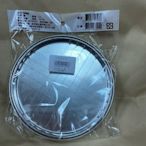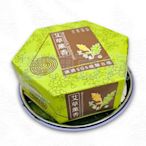艾草蚊香哪裡買 相關
廣告一點檸檬的香甜、艾草、香茅的清涼感、淡淡的檜木氣息,艾草檜木蚊香,防蚊同時享受林間嗅覺饗宴. 最怕半夜開燈打蚊子,艾草檜木蚊香,淡淡草本香氣,不怕臭味熏天,一盒可用160小時,日日都好眠
- 原始花梨木製作的香爐$250
原木香花梨木香爐,用原木挖製
喜歡溫暖木頭,香爐買花梨木香爐
- 綠薄荷精油 10ml/瓶,200元
經典的清新香氣
美國進口,來自大自然的清新
- 海洋藍香插,3件套組 $100
今年最超值的香插,買一個有多種用法
臥香、小盤香都能用,香插三件套組
- 白色鼠尾草無黏香,10倍香
100%白色鼠尾草製作,超濃郁的草本香
提升10倍香氣,完美呈現鼠尾草香
- 12生肖本命牌,人人有一塊
有香味的護身符,是百年香柏做的
本命佛助你一臂之力,會自動上門
- 台灣肖楠精油,原木純精油
香氣濃郁渾厚霸道,香氣超出原木10倍
安定感與威壓感兼具的台灣國寶
- 原始花梨木製作的香爐$250
過去一個月已有 超過 1 萬 位使用者造訪過 buy123.com.tw
你想買的艾草蚊香,生活市集今日閃購爆下殺!下單送B幣賺回饋,免運送到家! 本日限定搶先看!精選「美妝香氛、生活日用、保養清潔」好物特價中,手刀進站搶,買越多折越多!
搜尋結果
 $15現貨 艾草蚊香 台灣製造(蚊香盤賣場)露海空戶外旅遊用品-百樂創始店
$15現貨 艾草蚊香 台灣製造(蚊香盤賣場)露海空戶外旅遊用品-百樂創始店 $100蚊香.艾草蚊香棒【多寶如意】現貨【Chiu s手作】
$100蚊香.艾草蚊香棒【多寶如意】現貨【Chiu s手作】 $180魚魚小鋪~招財貓 蚊香座 艾草蚊香座魚魚小舖
$180魚魚小鋪~招財貓 蚊香座 艾草蚊香座魚魚小舖 $15「現貨+5支,廠商現貨」小黑蚊剋星純天然艾草蚊香棒(40CM)詠菱生活用品館
$15「現貨+5支,廠商現貨」小黑蚊剋星純天然艾草蚊香棒(40CM)詠菱生活用品館![「現貨+5、廠商現貨」小黑蚊剋星純天然艾草蚊香棒(40CM) 「現貨+5、廠商現貨」小黑蚊剋星純天然艾草蚊香棒(40CM)]() $15「現貨+5、廠商現貨」小黑蚊剋星純天然艾草蚊香棒(40CM)小麻雀生活用品館
$15「現貨+5、廠商現貨」小黑蚊剋星純天然艾草蚊香棒(40CM)小麻雀生活用品館![艾草天然蚊香32卷 艾草天然蚊香32卷]() $230艾草天然蚊香32卷豆豆的家
$230艾草天然蚊香32卷豆豆的家![艾草薰香蚊香 艾草 檀香 淨化 天然【附加蓋鐵盒】20卷 露營 戶外活動 野外 釣魚 垂釣 艾草薰香蚊香 艾草 檀香 淨化 天然【附加蓋鐵盒】20卷 露營 戶外活動 野外 釣魚 垂釣]() $168艾草薰香蚊香 艾草 檀香 淨化 天然【附加蓋鐵盒】20卷 露營 戶外活動 野外 釣魚 垂釣Y7153810895
$168艾草薰香蚊香 艾草 檀香 淨化 天然【附加蓋鐵盒】20卷 露營 戶外活動 野外 釣魚 垂釣Y7153810895![C 艾草薰香蚊香 艾草 檀香 淨化 天然 20卷 露營 戶外活動 野外 釣魚 垂釣 【附加蓋鐵盒】 C 艾草薰香蚊香 艾草 檀香 淨化 天然 20卷 露營 戶外活動 野外 釣魚 垂釣 【附加蓋鐵盒】]() $169C 艾草薰香蚊香 艾草 檀香 淨化 天然 20卷 露營 戶外活動 野外 釣魚 垂釣 【附加蓋鐵盒】原大五金百貨/可批發
$169C 艾草薰香蚊香 艾草 檀香 淨化 天然 20卷 露營 戶外活動 野外 釣魚 垂釣 【附加蓋鐵盒】原大五金百貨/可批發![📣 50%艾草薰香棒 滿3包送薰蚊香槽 短版40cm 📣 50%艾草薰香棒 滿3包送薰蚊香槽 短版40cm]() $200📣 50%艾草薰香棒 滿3包送薰蚊香槽 短版40cmY4654682554
$200📣 50%艾草薰香棒 滿3包送薰蚊香槽 短版40cmY4654682554![‧°安咕小舖 。抗登革熱必備! 天然(艾草 卍 芙蓉)養生防護蚊香薰香可驅蚊 祈福 淨化 除瘴氣 避邪 ) ‧°安咕小舖 。抗登革熱必備! 天然(艾草 卍 芙蓉)養生防護蚊香薰香可驅蚊 祈福 淨化 除瘴氣 避邪 )]() $225‧°安咕小舖 。抗登革熱必備! 天然(艾草 卍 芙蓉)養生防護蚊香薰香可驅蚊 祈福 淨化 除瘴氣 避邪 )‧。★全館購物滿1500免運★。‧
$225‧°安咕小舖 。抗登革熱必備! 天然(艾草 卍 芙蓉)養生防護蚊香薰香可驅蚊 祈福 淨化 除瘴氣 避邪 )‧。★全館購物滿1500免運★。‧![‧°╭☆安咕小舖 。抗登革熱必備! 天然(艾草 卍 芙蓉)養生防護蚊香薰香(可驅蚊 祈福 除瘴氣 避邪 ) ‧°╭☆安咕小舖 。抗登革熱必備! 天然(艾草 卍 芙蓉)養生防護蚊香薰香(可驅蚊 祈福 除瘴氣 避邪 )]() $225‧°╭☆安咕小舖 。抗登革熱必備! 天然(艾草 卍 芙蓉)養生防護蚊香薰香(可驅蚊 祈福 除瘴氣 避邪 )☆安咕小舖☆【GODI】
$225‧°╭☆安咕小舖 。抗登革熱必備! 天然(艾草 卍 芙蓉)養生防護蚊香薰香(可驅蚊 祈福 除瘴氣 避邪 )☆安咕小舖☆【GODI】![默默無蚊 黑魂版 蚊香盒.薰香盒.艾草薰香 默默無蚊 黑魂版 蚊香盒.薰香盒.艾草薰香]() $390默默無蚊 黑魂版 蚊香盒.薰香盒.艾草薰香168戶外生活館
$390默默無蚊 黑魂版 蚊香盒.薰香盒.艾草薰香168戶外生活館
Pneumonoultramicroscopicsilicovolcanoconiosis is the longest word in the English language. The word can be analysed as follows: This word was invented in the daily meeting from the National Puzzlers' League (N.P.L.) by its president Everett M. Smith. The word featured in the headline for an article published by the New York Herald ...
Wikipedia is written by volunteer editors and hosted by the Wikimedia Foundation, a non-profit organization that also hosts a range of other volunteer projects : Commons. Free media repository. MediaWiki. Wiki software development. Meta-Wiki. Wikimedia project coordination. Wikibooks. Free textbooks and manuals.
Macau or Macao is a special administrative region of the People's Republic of China.With a population of about 680,000 and a land area of 32.9 km 2 (12.7 sq mi), it is the most densely populated region in the world. Formerly a Portuguese colony, the territory of Portuguese Macau was first leased to Portugal by the Ming dynasty as a trading post in 1557.
- Name
- History
- Physical Description
- Use
- Significance in Christianity
- Flora
- In Popular Culture
- Gallery
- See Also
- External Links
Originally, the building's Latin name was simply amphitheatrum, 'amphitheatre'. Though the modern name Flavian Amphitheatre (Latin: Amphitheatrum Flavium) is often used, there is no evidence it was used in classical antiquity. This name refers to the patronage of the Flavian dynasty, during whose reigns the building was constructed, but the structu...
Construction, inauguration, and Roman renovations
The site chosen was a flat area on the floor of a low valley between the Caelian, Esquiline and Palatine Hills, through which a canalised stream ran as well as an artificial lake/marsh. By the 2nd century BC the area was densely inhabited. It was devastated by the Great Fire of Rome in 64 AD, following which Nero seized much of the area to add to his personal domain. He built the grandiose Domus Aurea on the site, in front of which he created an artificial lake surrounded by pavilions, garden...
Medieval
The Colosseum underwent several radical changes of use. By the late 6th century a small chapel had been built into the structure of the amphitheater, though this apparently did not confer any particular religious significance on the building as a whole. The arena was converted into a cemetery. The numerous vaulted spaces in the arcades under the seating were converted into housing and workshops, and are recorded as still being rented out as late as the 12th century. Around 1200 the Frangipani...
Modern
During the 16th and 17th century, Church officials sought a productive role for the Colosseum. Pope Sixtus V (1585–1590) planned to turn the building into a wool factory to provide employment for Rome's prostitutes, though this proposal fell through with his premature death. In 1671 Cardinal Altieri authorized its use for bullfights; a public outcry caused the idea to be hastily abandoned. In 1749, Pope Benedict XIV endorsed the view that the Colosseum was a sacred site where early Christians...
Exterior
Unlike Roman theatresthat were built into hillsides, the Colosseum is an entirely free-standing structure. It derives its basic exterior and interior architecture from that of two theatres back to back. It is elliptical in plan and is 189 meters (615 ft / 640 Roman feet) long, and 156 meters (510 ft / 528 Roman feet) wide, with a base area of 24,000 square metres (6 acres). The height of the outer wall is 48 meters (157 ft / 165 Roman feet). The perimeter originally measured 545 meters (1,788...
Interior seating
According to the Codex-Calendar of 354, the Colosseum could accommodate 87,000 people, although modern estimates put the figure at around 50,000. They were seated in a tiered arrangement that reflected the rigidly stratified nature of Roman society. Special boxes were provided at the north and south ends respectively for the Emperor and the Vestal Virgins, providing the best views of the arena. Flanking them at the same level was a broad platform or podium for the senatorialclass, who were al...
Arena and hypogeum
The arena itself was 83 meters by 48 meters (272 ft by 157 ft / 280 by 163 Roman feet). It comprised a wooden floor covered by sand (the Latin word for sand is harena or arena), covering an elaborate underground structure called the hypogeum (literally meaning "underground"). The hypogeum was not part of the original construction but was ordered to be built by Emperor Domitian. Little now remains of the original arena floor, but the hypogeum is still clearly visible. It consisted of a two-lev...
The Colosseum was used to host gladiatorial shows as well as a variety of other events. The shows, called munera, were always given by private individuals rather than the state. They had a strong religious element but were also demonstrations of power and family prestige and were immensely popular. Another major attraction was the animal hunt, or v...
The Colosseum is generally regarded by Christians as a site of the martyrdom of large numbers of believers during the persecution of Christians in the Roman Empire, as evidenced by Church history and tradition. On the other hand, other scholars believe that the majority of martyrdoms may have occurred at other venues within the city of Rome, rather...
The Colosseum has a wide and well-documented history of flora ever since Domenico Panaroli made the first catalogue of its plants in 1643. Since then, 684 species have been identified there. The peak was in 1855 (420 species). Attempts were made in 1871 to eradicate the vegetation, because of concerns over the damage that was being caused to the ma...
The Colosseum has appeared in numerous films, artworks and games. It is featured in films such as Roman Holiday, Gladiator, The Way of the Dragon, and Jumper. Several architectural works have also been modelled on or inspired by, the Colosseum. These include: 1. The Kongresshalle, or "Congress Hall", (1935, unfinished) at the Nazi Party Rally groun...
The Colosseum in 2021The Colosseum and the Arch of Constantine, seen from Palatine HillInteriorInteriorLuxembourg (/ˈlʌksəmbɜːrɡ/ ⓘ LUK-səm-burg;[9] Luxembourgish: Lëtzebuerg [ˈlətsəbuəɕ] ⓘ; German: Luxemburg [ˈlʊksm̩bʊʁk] ⓘ; French: Luxembourg [lyksɑ̃buʁ] ⓘ), officially the Grand Duchy of Luxembourg,[b] is a small landlocked country in Western Europe. It is bordered by Belgium to the west and north, Germany to the ...
Using Lorem ipsum to focus attention on graphic elements in a webpage design proposal One of the earliest examples of the Lorem ipsum placeholder text on 1960s advertising In publishing and graphic design, Lorem ipsum (/ ˌ l ɔː. r ə m ˈ ɪ p. s ə m /) is a placeholder text commonly used to demonstrate the visual form of a document or a typeface without relying on meaningful content.
The frequent vardenafil-specific side-effect is nausea; the infrequent side effects are abdominal pain, back pain, photosensitivity, abnormal vision, eye pain, facial edema, hypotension, palpitation, tachycardia, arthralgia, myalgia, rash, itch, and priapism . One possibly serious, but rare, side effect with vardenafil is heart attack.












